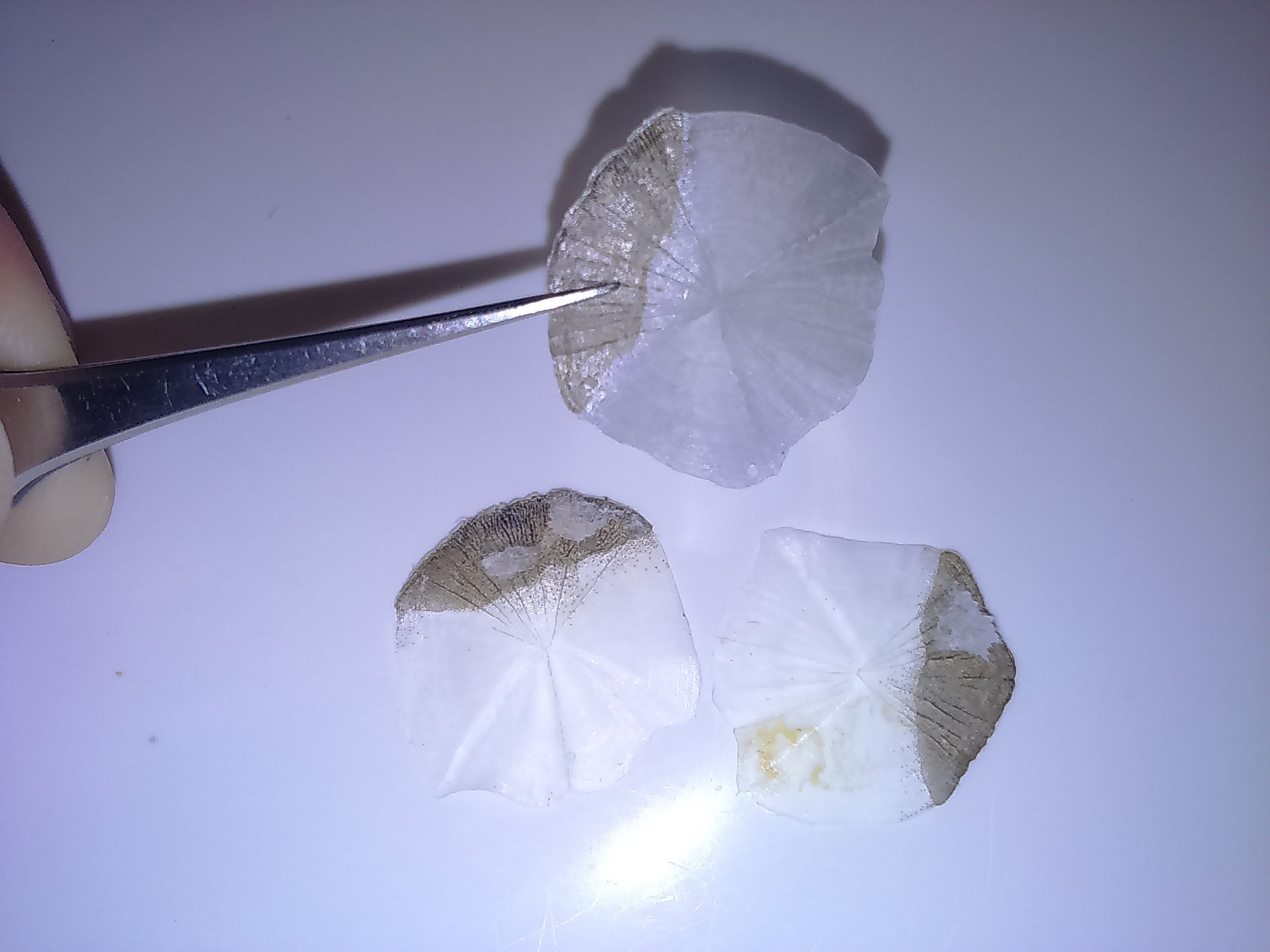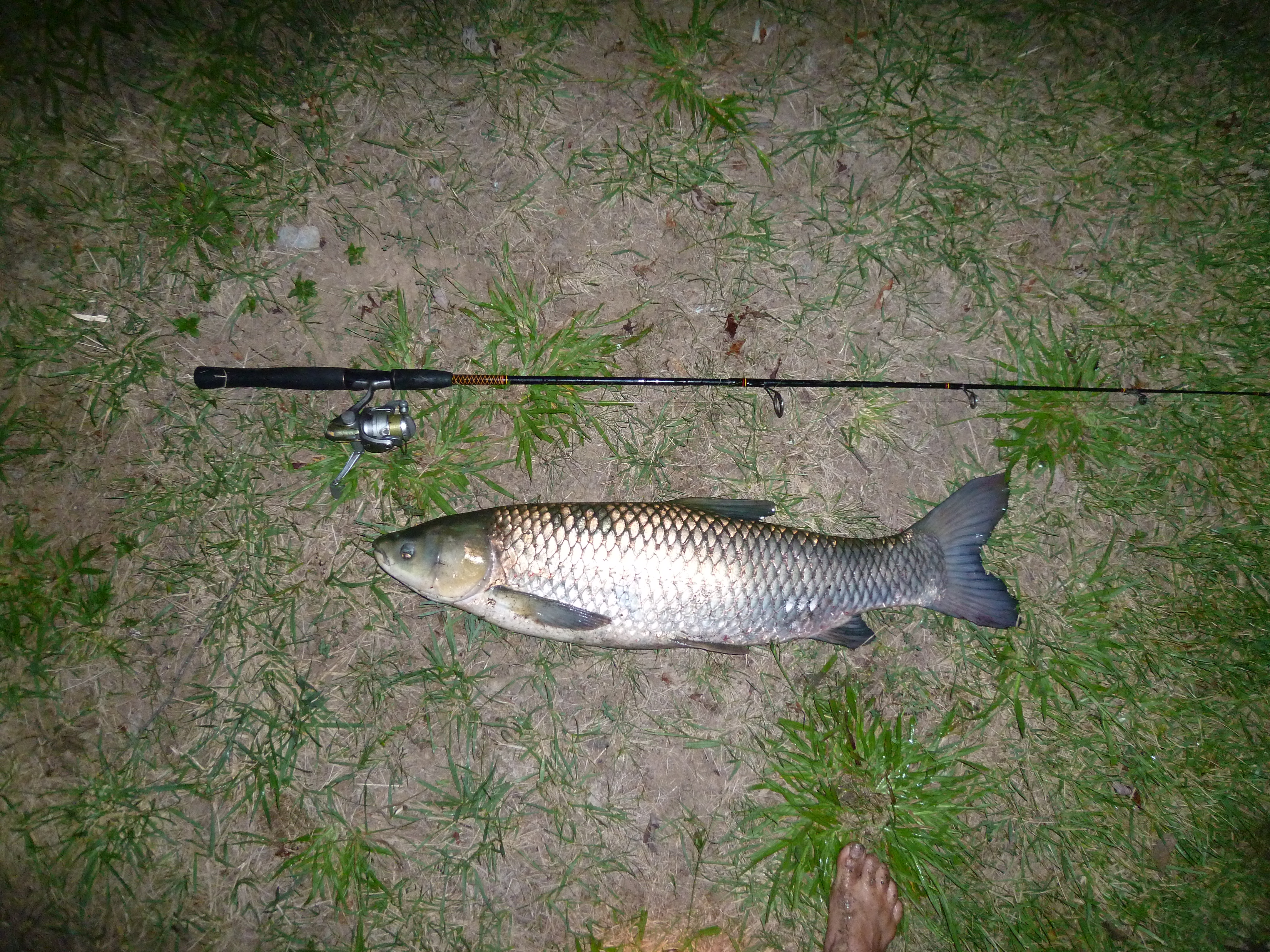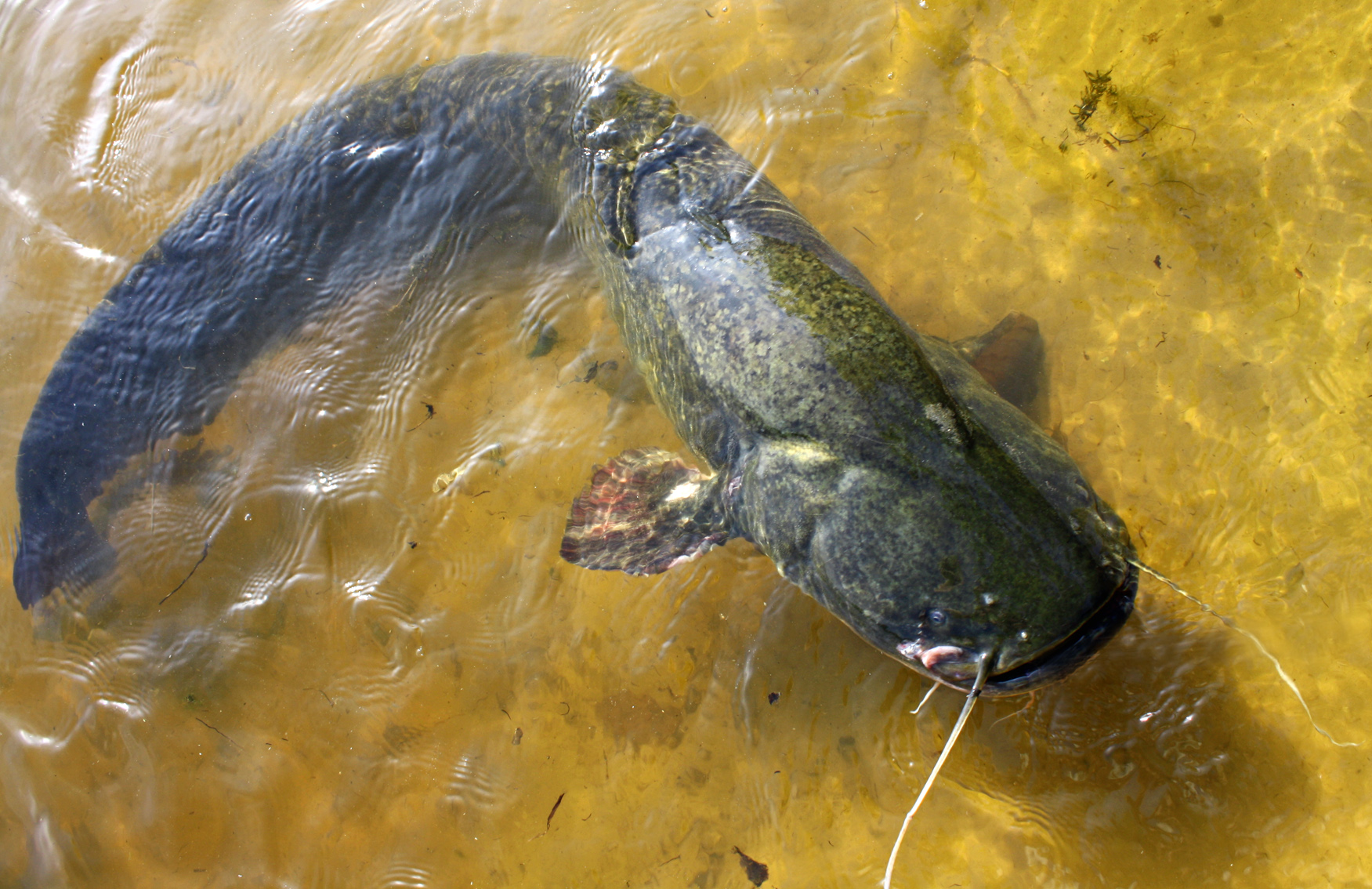|
Bela Reka Lake
Bela Reka ( sr-cyr, Бела река), is an artificial lake in Ripanj, a suburb of Belgrade, the capital of Serbia. It was created in 1988 on the stream of the same name, as part of a project to prevent floods on the territory of Belgrade. In time it became a popular fishing location and in 2021 survey began to judge lake's declaration as a natural monument due to its undisturbed nature. Location The lake is located some south of downtown Belgrade. Administrativelly, it belongs to the Belgrade's municipality of Voždovac, in municipality's southern section. It is situated in the northwest part of the suburban village of Ripanj, and west of its Bela reka hamlet. Geography The lake is located in the valley of the northeast oriented Bela reka creek, a left tributary of the Topčiderka, which flows into it at another Ripanj's neighborhood, Kolonija. The lake also receives water from two water wells, which are now submerged. Valley locality in which the lake was formed is ca ... [...More Info...] [...Related Items...] OR: [Wikipedia] [Google] [Baidu] |
Ripanj
Ripanj ( sr-Cyrl, Рипањ) is a suburban settlement of Belgrade, Serbia. It is located in Belgrade's municipality of Voždovac. It has a distinction of being "the largest village of Serbia" taking in account its number of population, but also because it has the largest area of all rural settlements in the country. Location Ripanj is located some 25 kilometers south of Belgrade, on the southern slopes of the Avala mountain, in the valley of the Topčiderka river. It is the southernmost settlement in the municipality, on the northern side of the Lipovica woods, near the tripoint of the municipalities of Voždovac, Barajevo and Sopot. History It is believed that settlement got its name from the large rock in the vicinity, called Ripa. Slopes of the Avala were already inhabited in Neolithic. The location is an old mining area as it is known that already Romans were extracting mercury and silver and the tradition was later continued by the medieval Saxon miners. One of t ... [...More Info...] [...Related Items...] OR: [Wikipedia] [Google] [Baidu] |
Northern Pike
The northern pike (''Esox lucius'') is a species of carnivorous fish of the genus ''Esox'' (pikes). They are commonly found in brackish water, moderately salty and fresh waters of the Northern Hemisphere (''i.e.'' holarctic in distribution). They are known simply as a pike (Plural, : pike) in Great Britain, Ireland, most of Eastern Europe, Canada and the United States, U.S., although in the Midwestern United States, they may just be called a Northern. Pike can grow to a relatively large size. Their average length is about , with maximum recorded lengths of up to and maximum weights of . The International Game Fish Association, IGFA currently recognises a pike caught by Lothar Louis on Greffern Lake, Germany, on 16 October 1986, as the all-tackle world-record holding northern pike. Northern pike grow to larger sizes in Eurasia than in North America, and in coastal Eurasian regions than inland ones. Etymology The northern pike gets its common name from its resemblance to the ... [...More Info...] [...Related Items...] OR: [Wikipedia] [Google] [Baidu] |
Dice Snake
The dice snake (''Natrix tessellata'') or water snake is a Eurasian nonvenomous snake in the family Colubridae, subfamily Natricinae. Its average length is . Body color may vary from greyish green to brownish or almost black, with dark spots on the back. The belly is sometimes vividly coloured in yellow or orange, with black spots, very similar to dice, hence the name. Ecology Living mainly near rivers, streams and lakes, it frequently feeds on fish. Sometimes, it feeds also on amphibians such as frogs, toads, and tadpoles. In one instance, a dice snake was even observed trying to feed on an olm (''Proteus anguinus'') that had been flushed from a cave in Bosnia and Herzegovina following heavy rains. However, the snake was far too small to be able to consume the olm. While considered nonvenomous, ''N. tessellata'' produces a potent antihemorrhagin in its serum. As a defence, it spreads a very bad-smelling secretion from its cloaca. Another defence mechanism is thanatosis, pl ... [...More Info...] [...Related Items...] OR: [Wikipedia] [Google] [Baidu] |
Podarcis Muralis
The common wall lizard (''Podarcis muralis'') is a species of lizard with a large distribution in Europe and well-established introduced populations in North America, where it is also called the European wall lizard. It can grow to about in total length. The animal has shown variation in the places it has been introduced to. Fossils have been found in a cave in Greece dating to the early part of the Holocene. Description The common wall lizard is a small, thin lizard whose small scales are highly variable in colour and pattern. Its coloration is generally brownish or greyish, and may occasionally be tinged with green. In some individuals, the row of spots along their backs may form a line, while others may have a reticulated pattern with dark spots on the side and scattered white spots that can be blue in the shoulder region. The tail is brown, grey or rust in colour, and may also have light bars on the sides. The belly region has six rows of larger rectangular scales that are ... [...More Info...] [...Related Items...] OR: [Wikipedia] [Google] [Baidu] |
Common Rudd
The common rudd (''Scardinius erythrophthalmus'') is a benthos, bentho-pelagic freshwater Actinopterygii, ray-finned fish belonging to the Family (biology), family Leuciscidae. This species is widely spread in Europe and central Asia, around the basins of the North Sea, North, Baltic Sea, Baltic, Black Sea, Black, Caspian Sea, Caspian and Aral Sea, Aral seas. Identification Morphologically, this species is very similar to the roach (''Rutilus rutilus''), with which it can be easily confused. It can be identified by the yellow eye colour. The eye of the roach has a big red spot above the pupil, that can be more or less conspicuous. The rudd has an upturned mouth allowing it to feed easily at the top of the water. The placement of the dorsal fin is more to the rear which is even visible in very young fish. There are normally only one or two scales between the tip of the pelvic fins and the anal fins, while on the roach there are five. Also the skin of the rudd is yellowish green, w ... [...More Info...] [...Related Items...] OR: [Wikipedia] [Google] [Baidu] |
Common Bream
The common bream (''Abramis brama''), also known as the freshwater bream, bream, bronze bream, carp bream or sweaty bream, is a European species of freshwater fish in the family Leuciscidae. It is now considered to be the monotypic, only species in the genus ''Abramis''. Taxonomy The common bream was first formally Species description, described as ''Cyprinus brama'' in the 10th edition of Systema Naturae, 10th edition of ''Systema Naturae'' published in 1758 by Carl Linnaeus with its Type locality (biology), type locality given as European lakes. In 1816 Georges Cuvier proposed the gneus ''Abramis'', designating ''Cyprinus brama'' as its type species. This taxon is classified within the subfamily Leuciscinae of the family Leuciscidae. Etymology The common bream is the only species in the genus ''Abramis'', this name is an Ancient Greek name for a bream or mullet. The Specific name (zoology), specific name is derived from ''Abramis''. Range and habitat The common bream's home ... [...More Info...] [...Related Items...] OR: [Wikipedia] [Google] [Baidu] |
European Perch
The European perch (''Perca fluviatilis''), also known as the common perch, redfin perch, big-scaled redfin, English perch, Euro perch, Eurasian perch, Eurasian river perch, Hatch, poor man's rockfish or in Anglophone parts of Europe, simply the perch, is a predatory freshwater fish native to Europe and North Asia. It is the type species of the genus '' Perca''. The perch is a popular game fish for recreational anglers, and has been widely introduced beyond its native Eurasian habitats into Australia, New Zealand and South Africa. Known locally simply as "redfin", they have caused substantial damage to native fish populations in Australia and have been proclaimed a noxious species in New South Wales. Taxonomy The first scientific description of the river perch was made by Peter Artedi in 1730. He defined the basic morphological signs of this species after studying perch from Swedish lakes. Artedi described its features, counting the fin rays scales and vertebrae of the typ ... [...More Info...] [...Related Items...] OR: [Wikipedia] [Google] [Baidu] |
Prussian Carp
The Prussian carp, silver Prussian carp or Gibel carp (''Carassius gibelio'') is a member of the family Cyprinidae, which includes many other fish, such as the common carp, goldfish, and the smaller minnows. It is a medium-sized cyprinid, and does not exceed a weight of and a length of . They are usually silver, although other color variations exist. They are omnivorous and feed on plankton, invertebrates, plant material and detritus. Originally from Siberia or central Europe, they have been introduced to and are now inhabiting lakes, ponds, and slow-moving rivers throughout Europe, North America, and Asia. Prussian carps are a highly invasive fish species in areas outside their native range. They reproduce and spread rapidly. In 2020, scientists demonstrated that a small proportion of fertilized Prussian carp eggs ingested by waterfowl survive passing through the digestive tract and hatch after being retrieved from the feces. Birds exhibit strong preference for fish eggs, wh ... [...More Info...] [...Related Items...] OR: [Wikipedia] [Google] [Baidu] |
European Chub
''Squalius cephalus'', the common chub, European chub or simply chub, is a species of freshwater ray-finned fish belonging to the family Leuciscidae, the daces, Eurasian minnows and related fishes. This species is found in Europe where it frequents both slow and moderate rivers, as well as canals, lakes and still waterbodies of various kinds. Description It is a stocky fish with a large rounded head. Its body is long and cylindrical in shape and is covered in large greenish-brown scales which are edged with narrow bands of black across the back, paling to golden on the flanks and even paler on the belly. The tail is dark brown or black, the dorsal fin is a greyish-green in colour and all the other fins are orange-red. The dorsal fin has 3 spines and 7–9 soft rays while the anal fin has 3 spines and 7–10 rays. The vertebrae count is 42–48. It can grow to 60 cm standard length but most fish are around 30 cm. Distribution The chub is distributed throughout most of ... [...More Info...] [...Related Items...] OR: [Wikipedia] [Google] [Baidu] |
Zander
The zander (''Sander lucioperca''), sander or pikeperch, is a species of ray-finned fish from the Family (biology), family Percidae, which also includes perch, Gymnocephalus, ruffe and Darter (fish), darter. It is found in freshwater and brackish habitats in western Eurasia. It is a popular game fish and has been introduced to a variety of localities outside its native range. It is the type species of the genus ''Sander''. Taxonomy The zander was first formally Species description, described in 1758 as ''Perca lucioperca'' by Carolus Linnaeus in volume 1 of the tenth edition of ''Systema Naturae'' and he gave the Type locality (biology), type locality as "European lakes". When Lorenz Oken (1779–1851) created the genus ''Sander (fish), Sander'' he made ''Perca lucioperca'' its type species. The zander is part of the European clade within the genus ''Sander'' which split from a common ancestor with the North American clade, which the walleye (''S. vitreus'') and the sauger (''S. ... [...More Info...] [...Related Items...] OR: [Wikipedia] [Google] [Baidu] |
Grass Carp
The grass carp (''Ctenopharyngodon idella'') is a species of large herbivorous freshwater fish in the family Cyprinidae, native to the Pacific Far East, with a native range stretching from northern Vietnam to the Amur River on the Sino-Russian border.Mandrak and Cudmore. 2004''Biological Synopsis of Grass Carp (Ctenopharyngodon idella)''. This Asian carp is the only species of the genus ''Ctenopharyngodon''. Grass carp are resident fish of large turbid rivers and associated floodplain lakes/wetlands with a wide range of temperature tolerance, and spawn at temperatures of . It has been cultivated as a food fish in China for centuries, being known as one of the "Four Great Domestic Fish" ( zh, 四大家鱼), but was later introduced to Europe and the United States for aquatic weed control, becoming the fish species with the largest reported farmed production globally, over five million tonnes per year. [...More Info...] [...Related Items...] OR: [Wikipedia] [Google] [Baidu] |
Wels Catfish
The wels catfish ( or ; ''Silurus glanis''), also called sheatfish or just wels, is a large species of catfish native to wide areas of central, southern, and eastern Europe, in the basins of the Baltic, Black and Caspian Seas. It has been introduced to Western Europe as a prized sport fish and is now found from the United Kingdom east to Kazakhstan and China and south to Greece and Turkey. Etymology The English common name comes from Wels, the common name of the species in German language. ''Wels'' is a variation of Old High German ''wal'', from Proto-Germanic ''*hwalaz'' – the same source as for ''whale'' – from Proto-Indo-European ''*(s)kʷálos'' ('sheatfish'). Evolution The earliest known fossil remains of the wels catfish are from the late Miocene (about 5.3 million years ago) of Ukraine. Potentially slightly older but less well-preserved remains from 6-7 million years ago are also known from the same region. During this time period, the dominant catfish in eastern ... [...More Info...] [...Related Items...] OR: [Wikipedia] [Google] [Baidu] |







